Education
B.Sc. (Hons), Microbiology/Zoology, University of Otago, New Zealand, 1972
PhD Biochemistry, University of Otago, New Zealand, 2013
The primary focus of Lincoln’s PhD dissertation was the identification and isolation of enzymes involved in digestion of phytoplankton in the bivalve gut and the assimilation and biotransformation of secondary metabolites released by these digestive processes within the hepatopancreas. This fundamental research has led to a greater understanding of the metabolism of shellfish toxins, which is necessary to understand risk and for the development of appropriate policies/procedures to manage the risk they pose to consumers.
Professional Career
Lincoln worked as a research technician with New Zealand’s Department of Scientific and Industrial (DSIR; Freshwater Section, Ecology Division) from 1975-1978. He moved to the Cawthron Institute in Nelson in 1978 as a research technician and then as a research scientist. His key interests are aquatic ecology and the environmental effects of aquaculture, including phytoplankton systematics, and ecology and physiology in New Zealand coastal waters. He has expertise in microalgal isolation and culture, biotoxin analytical methodologies, shellfish biochemistry, metabolism and physiology, as well as biogeochemical processes in coastal and freshwater environments. He has contributed hugely to New Zealand’s marine environmental monitoring and biosecurity risk assessments.
Honours
Plenary speaker invitations:
2019 Invited speaker and topic coordinator. “The impact of fish-killing algae events on coastal marine ecosystems.” At the Advanced International Colloquium and Technical Workshop on Fish Killing Marine Algae and their effects. Puerto Varas, Chile 8-11 October 2019. Sponsored by IOC-SCOR.
2014 Plenary address “Shellfish biotoxin monitoring for public health and aquaculture in New Zealand” at a symposium on “Shellfish Toxin Monitoring with New Detection Techniques in Japan”. National Research Institute of Fisheries Science, Yokohama, Japan, 27 November 2014.
2011 International Workshop on Marine Ecosystem Monitoring and Assessment. Pusan, Korea 1-2 December
2004 GEOHAB Open Science Meeting on HABs in fjords and coastal embayments. Vina del Mar, Chile, 26-29 April
2004 XI International Conference on Harmful Algal Blooms, Cape Town, South Africa, 14-19 November
2003 “Aquaculture Canada 2003” 20th annual meeting Victoria B.C., Oct 29- Nov 1
2001 2nd Irish Marine Science Biotoxin Workshop, Galway, Ireland 11 October
2000 South Australia Shellfish Quality Assurance Program DSP-PTX workshop. Lincoln Marine Science Centre, Port Lincoln South Australia, 4 October
1997 PICES (North Pacific Marine Sciences Organisation) V1 Annual Meeting, Pusan Korea, October 14-26
Key HAB contributions
Lincoln has dedicated his research life to the study of HABs and is internationally recognised through his publication record and international collaborations. His expertise in dinoflagellate taxonomy, ecology and biochemistry is evident through his numerous publications and presentations, particularly at ICHA conferences. Lincoln was a pioneer of harmful algal research in New Zealand after attending a conference on algal bloom issues in Shimizu, Japan and undertaking a subsequent fact-finding tour (including a visit to the laboratory of Professors’ Takeshi Yasumoto and Yasukatsu Oshima) in 1984. The visit, sponsored by the New Zealand Fishing Industry Board resulted in a report that secured the first government funding to undertake research on marine harmful algal blooms and their implications for aquaculture in New Zealand. Lincoln was one of the foundation researchers whose work led to New Zealand’s internationally recognised seafood safety research programme, specialising in marine harmful algae and biotoxins as well as the associated monitoring programme for the seafood industry and public health. Throughout his career he has been passionate about developing useful monitoring technologies for both research and industry. A key example of this was the development of the SPATT (solid phase adsorption toxin tracking) method, which is now widely used worldwide. This simple and sensitive technique revolutionised the monitoring of toxic algal blooms and associated toxins, both in marine and freshwater environments.
In the 1990s, as a result of a visit to Cawthron by Dr Toshiyuki Suzuki, Lincoln became the primary advocate at Cawthron for the purchase of a liquid chromatography–mass spectrometry instrument, an analytical machine that transformed marine biotoxin research at the Cawthron Institute and enabled a shift away from reliance on the mouse bioassay for regulatory monitoring of marine biotoxins. This represented a key technological change and a step change improvement to the way marine toxins were monitored both in New Zealand and internationally. It has had a positive global impact on the HAB science community, shellfish industries and regulatory agencies.
In recent years Lincoln has been involved in the trialling of remote automated monitoring equipment for phytoplankton monitoring, including the Imaging FlowCytobot and field deployable molecular assays. This technology is progressing rapidly and has the potential to improve the speed and frequency of high-quality phytoplankton information to support shellfish and finfish aquaculture industries.
A key focus of Lincoln’s research has been the genus Alexandrium, and he described the species Alexandrium camurascutulum. His recent work on novel Alexandrium blooms has established relationships between dinoflagellate growth, life cycle transitions, and inter-annual and seasonal changes in water column characteristics. This research has led to the development of forecasting models for aquaculture.
Lincoln is also an expert in the taxonomy and ecology of microalgae that cause mass mortalities of wild shellfish and farmed salmon, providing advice and information to industry to try a minimise the impact of these catastrophic events. His work in this field began in 1981 with the characterisation of the microalgae that caused a mass of net-clogging "slime" in Tasman Bay which reduced fish catches and severely affected the livelihood of the fishing industry. His research into the Karenia species present in New Zealand, started with the 1993 bloom of K. mikimotoi that closed New Zealand to shellfish harvesting and was the trigger for the creation of New Zealand’s world leading seafood safety monitoring programme. His research continued with a K. selliformis bloom, which produced the cyclic imine gymnodimine and was responsible for clam mortalities on Southland beaches in New Zealand. He contributed to the characterisation of gymnodimine for the first time from New Zealand oysters.
His research and depth of knowledge have benefitted the seafood industry in New Zealand and globally. He has written many reports for both the shellfish (GreenshellTM mussel) and finfish (primarily King salmon) industries, providing crucial information for risk assessments and monitoring programmes. He holds a wealth of knowledge on the important marine ecosystems of the Marlborough Sounds, and Tasman and Golden Bays (all key aquaculture regions in New Zealand). He has provided expertise for the seafood industry, public health protection authorities, and the international science community.
Lincoln has served the broader HAB community by contributing to the success of ISSHA through active contributions as a society member and through committee service. He was the conference chair for the ICHA held in Wellington, New Zealand (October 2014). This highly successful meeting had 385 delegates from 34 countries (196 oral presentations and 150 poster presentations) and resulted in the production of an excellent on-line proceedings. He was on the Editorial Advisory Board of Harmful Algae, and served as a Council member International Society for the Study of Harmful Algae (ISSHA) and a Member of the Scientific Steering Committee of GlobalHAB. Lincoln has over four decades experience in carrying out fundamental research and advising public health authorities, food safety regulators and the aquaculture industry on solutions to the risks posed by harmful algal blooms.
10 Selected publications
- MacKenzie, A.L. A long term time series of Dinophysis acuminata blooms and associated shellfish toxin contamination in Port Underwood, Marlborough Sounds, New Zealand. Toxins. doi: 10.3390/toxins11020074 http://www.mdpi.com/2072-6651/11/2/74/pdf
- MacKenzie, AL. [Ed]. 2015. Marine and Freshwater Harmful Algae. Proceedings of the 16th International Conference on Harmful Algae, Wellington, New Zealand, 27th-31st October 2014. Cawthron Institute, Nelson, New Zealand and International Society for the Study of Harmful Algae.
- MacKenzie, AL. The risk to New Zealand shellfish aquaculture from paralytic shellfish poisoning (PSP) toxins: A review. New Zealand Journal of Marine and Freshwater Research 48: 430–465
- MacKenzie, AL., Selwood AI, Marshall C. 2012. Isolation and characterization of an enzyme from the Greenshell™ mussel Perna canaliculus that hydrolyses pectenotoxins and esters of okadaic acid. Toxicon 60: 406-419
- MacKenzie, AL., Smith KF, Rhodes LL, Brown A, Langi V, Edgar M, Lovell G, Preece M. 2011. Mortalities of sea-cage salmon (Oncorhynchus tshawytscha) due to a bloom of Pseudochattonella verruculosa (Dictyochophyceae) in Queen Charlotte Sound, New Zealand. Harmful Algae 11: 45-53
- MacKenzie, AL. Solid phase adsorption toxin tracking (SPATT): a new monitoring tool that simulates the biotoxin contamination of filter feeding bivalves. Toxicon 44: 901-918
- MacKenzie, AL., de Salas M, Adamson J, Beuzenberg V. 2004. The dinoflagellate genus Alexandrium (Halim) in New Zealand coastal waters: comparative morphology, toxicity and molecular genetics. Harmful Algae 3: 71–92
- MacKenzie, AL., Holland P, McNabb P, Beuzenberg V, Selwood A, Suzuki T. 2002. Complex toxin profiles in phytoplankton and Greenshell mussels (Perna canaliculus), revealed by LC-MS/MS analysis. Toxicon 40: 1321-1330
- MacKenzie, AL., Sims, I., Beuzenberg, V., Gillespie, P. 2002: Mass accumulation of mucilage caused by dinoflagellate polysaccharide exudates in Tasman Bay, New Zealand. Harmful Algae 69-84
- MacKenzie, AL. Does Dinophysis (Dinophyceae) have a sexual life cycle? Journal of Phycology 28: 399-406

